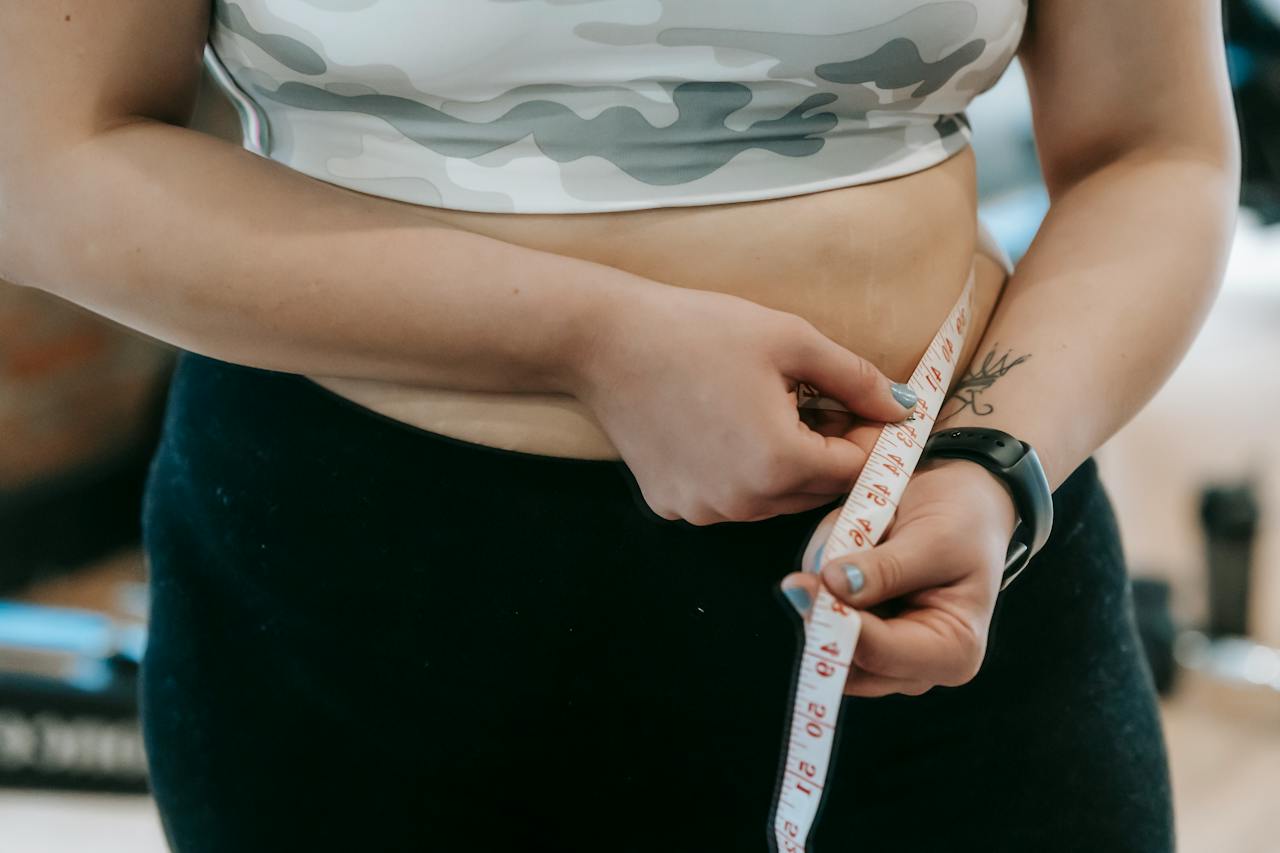
Measuring your body’s changes is not just about keeping tabs on your physical appearance. It’s a tool that provides valuable insights into your progress and helps you stay accountable. By regularly recording your body measurements, you’ll be able to see the tangible results of your efforts.
Using the right tools to get the most accurate measurements is essential. Here are a few items you should have on hand:
Body Weight Scales
- Place the scale on a flat, hard surface. Avoid using it on carpets or uneven floors, as it can affect accuracy.
- Ensure the scale is calibrated to zero. Some scales automatically do this when you step on them, while others may require manual adjustment. Refer to your scale’s user manual for specific instructions.
- Stand on the scale with your feet evenly distributed and your weight equally balanced on both feet.
- Stand still and wait for the scale to display your weight. This may take a few seconds, depending on the scale’s design.
- Record your weight the same way, preferably before eating or drinking in the morning.
Tape Measure:
- For consistent measurements, always measure at the same time of day, ideally in the morning.
- Wear minimal clothing or the same type of clothing for each measurement to ensure accuracy.
- Use a flexible tape measure designed for body measurements.
- Ensure the tape is snug enough around your measuring area but not pressing into the skin.
- Use the following guidelines for specific measurements:
- Waist: Measure at the narrowest point above the navel.
- Hips: Measure around the widest part of your hips and buttocks.
- Chest: Measure around the fullest part of your chest, typically at nipple level.
- Arms and Legs: Measure at the midpoint between the joint (e.g., elbow or knee) and the shoulder or hip.
How to Take Accurate Body Measurements
- For consistent measurements, always measure at the same time of day, ideally in the morning.
- Wear minimal clothing or the same type of clothing for each measurement.
- Use a tape measure to record circumferences accurately, ensuring it’s snug but not too tight.
- Keep a record of your measurements in a dedicated journal or tracking app.
Interpreting Changes in Body Measurements
When you see changes in your body measurements, it’s a sign that you’re progressing toward your goals. Decreased measurements may indicate fat loss, while increases can suggest muscle gain—track changes over time to assess the effectiveness of your nutrition and exercise program.
Performing Self-Assessments at Home:
You don’t need specialised equipment or professional trainers to perform these assessments. Many can be done at home with minimal equipment or even your body weight.
The Importance of Progression and Tracking Your Fitness Assessments
Regularly reassess your strength, endurance, and flexibility to monitor improvements and adjust your training program accordingly. Progression is a key element in achieving your fitness goals.



